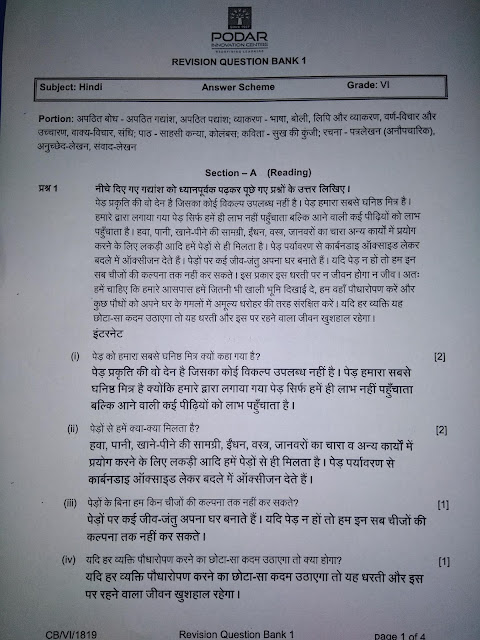Chapter notes : origin of fabrics
Chapter notes : origin of
fabrics(std 6)
(to be written in note book)
Question1.
From
which parts of the plant cotton and jute are obtained?
Answer:
Cotton is obtained from the fruits of the cotton plant, called cotton balls.
Jute fibre is obtained from the stem of the jute plant.
Q2: Name two items that are made from Jute fibre.
Answer:
(i)
Jute Sack bags
(ii)
Ropes
Question 3. Name the processes involved in making cotton
fabric from cotton bolls
Answer:
1.
Hand Picking Cotton Bolls: When cotton bolls mature, they burst out white
cotton
fibre. These bolls are hand picked.
2.
Ginning: It is the process of removing cotton seeds from bolls. The seedless
cotton
mass is combed into lints and bales.
3.
Spinning: It is the process of turning cotton mass into yarn. It is done by
home
made
spinning machines like takli or charkha. At large scale big spinning
machines
are used.
4.
Weaving and Knitting: The process of combining two sets of yarns is called
weaving.
It is done on a machine called loom (handloom or powerloom).In
knitting,
single fibre is used to prepare a fabric. Knitting can be done by hand or
by
knitting machines.
Question4. Name
two items that are made from coconut fibre.
Answer:
Coir is the natural fibre obtained from coconut husk. Items made from coir (coconut
fibre) are:
(i)
Coir Mattresses
(ii)
Mats
(iii)
Baskets
Question5 What is spinning and weaving?
Ans:
Spinning
It is a process of converting
cotton fibre to yarn. Yarn is used for processes such as a. weaving b. knitting
etc. in the spinning process these cotton ball is converted to yarn via the
following process. 1. Plucking – Cotton in ball are plucked. 2. Ginning- Cotton
in ball that are plucked is divided from the seeds in this process. The seed is
inside the cotton is like fruit. After separating they are packed, which are
called known as bales and are transported for next process. This is the process
of spinning.
Weaving – The process of
arranging two sets of yarn together to make a fabric is called weaving.The big
reels of yarn are called bobbins.These bobbins are used for weaving the
cloth.The cloth is woven on looms.After that they bleached and dyed to give a
finish.
Question:6 How is Silk obtained from silkworms ?
Silk moths are reared and their cocoons
are collected to get silk yarns (threads).
a) Rearing of silkworms :- The female silk moth lays eggs. The eggs are
warmed to a suitable temperature.The eggs hatch into larvae called caterpiller
or silk worms. The silkworms are kept in bamboo trays and feeds on mulberry
leaves and grows in size. After 30 to 40 days the silk worms stop eating and
begins to spin cocoons. Inside the cocoon the silk worm develops into silk
moth.
b) Processing of silk :- The cocoons are collected and kept in
sunlight or boiled or exposed to steam. The silk fibres separate out. The
process of taking out the fibres from the cocoons is called reeling. Reeling is
done by machines. The silk fibres are then spun into threads and woven into
silk cloth.
Question :7 ‘The rearing of
silkworms for obtaining silk is called sericulture.’describe the life history
of a silk worm.
Ans :
1.The female silk moth lays eggs
which hatch into larvae called caterpillars or silk worms.
2.The larva feeds on mulberry leaves
and grows in size.
3.Then it secretes fibers made of
protein and weaves the fibres around itself completely and forms pupa.
This covering is called cocoon.
4.The pupa then develops into a young
silk moth. Silk yarn (thread) is obtained from the cocoon of the silk moth.
The most common silk moth is
the mulberry silk moth
--------------------------

